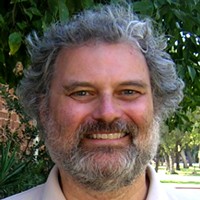One of the most pressing pursuits in bioscience is increasing agricultural production. The Food and Agriculture Organization estimates that, as a planet, we need to produce 70 percent more food by the year 2050 in order to keep up with increasing population. We have already shone our spotlight on several university research teams who are tackling this problem, like the UW team attempting to increase flowering rates and the UIUC team who spliced algae genes to increase photosynthesis. Now we look to Washington University in St. Louis for some novel ideas about optimizing photosynthesis.
 Professor of biology Robert Blankenship will tell you that even though photosynthesis has remained relatively unchanged for millions of years, it is far from a perfect process. In terms of efficiency, it fails to rival even our current solar panel technology. “We expect the solar cells we put on our rooftops to be at least 15- or 20- percent efficient,” Blankenship says in a recent WUSTL release. “A plant is at best one-percent efficient.”
Professor of biology Robert Blankenship will tell you that even though photosynthesis has remained relatively unchanged for millions of years, it is far from a perfect process. In terms of efficiency, it fails to rival even our current solar panel technology. “We expect the solar cells we put on our rooftops to be at least 15- or 20- percent efficient,” Blankenship says in a recent WUSTL release. “A plant is at best one-percent efficient.”
Perhaps, thought Blankenship, this discrepancy is a good place to start. What makes solar panels so much more efficient? The answer, he found, is that a plant utilizes only visible light. While it may seem like visible light involves a broad spectrum in wavelengths, in fact it is a tiny fraction of the types of light produced by the sun. Solar panels absorb some infrared light, which is why they effectively gather more energy from the sun than plants.
Another bottleneck for photosynthesis is the enzyme RuBisCO, which is supposed to be a catalyst but is notoriously slow at its job. “It turns over a few times a second,” says Blankenship, “which is really, really slow. Some enzymes will turn over tens of millions of times per second.” The primary function of RuBisCO is to accelerate the acquisition of carbon dioxide necessary to perform photosynthesis. Without the proper amounts of CO2, photosynthesis is slowed to a crawl.
Therefore, Blankenship has two separate ideas for optimizing photosynthesis. First, he proposes modifying the light receptors of plants to absorb a wider range of light so as to gather more energy. Second, he proposes modifying or replacing the catalyst RuBisCO to speed up current rates of photosynthesis. These are the two main projects his lab will be focusing on for now, so we will see if he has any success with them.
Funding for Blankenship’s ideas came from the National Science Foundation and the National Institutes of Health. For additional information about funding for research at Washington University in St. Louis, read our free WUSTL Funding Statistics Report, available via the link below:
Biotechnology Calendar, Inc. visits Washington University in St. Louis each year for our St. Louis BioResearch Product Faire™ event, held on the WUSTL campus. This show is an excellent opportunity for life science scientists and laboratory equipment suppliers to network and discuss their research needs and solutions. Biotechnology Calendar is a full service event company that has produced on-campus, life science research trade shows nationwide for the past 20 years. We plan and promote each event to bring the best products and services to the finest research campuses across the country. If you can’t make the St. Louis BioResearch Product Faire™ event, not to worry: you can check our 2015 show schedule for an upcoming show in your area.


